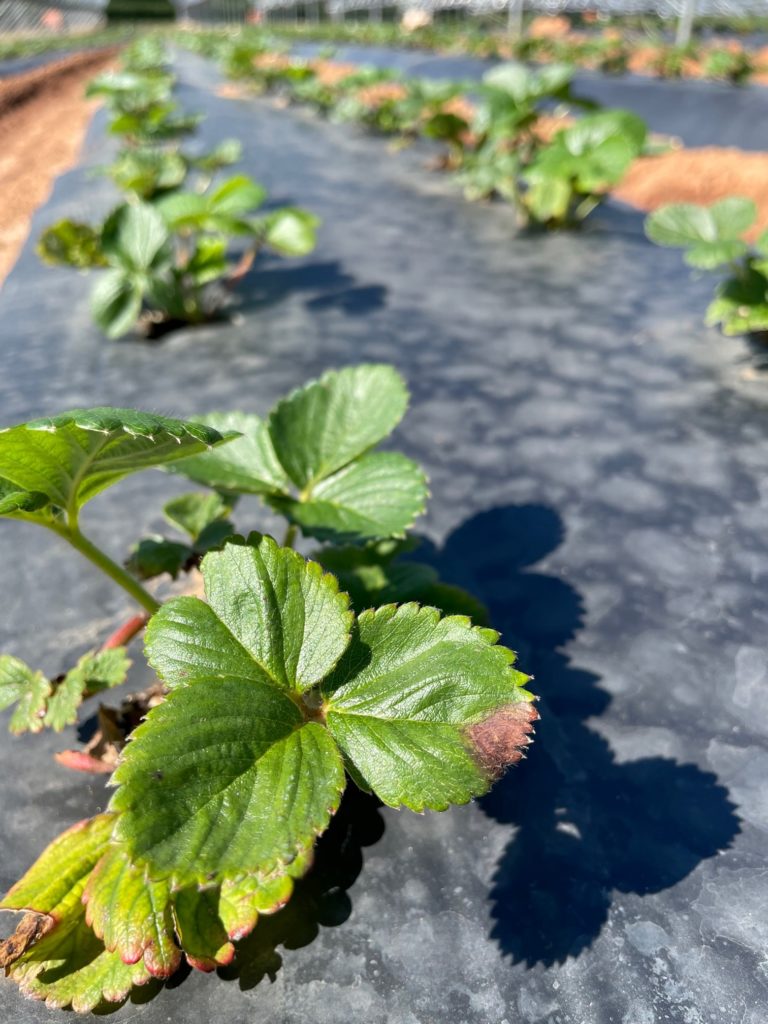By Clint Thompson
Neopestalotiopsis disease has been confirmed in Georgia strawberries this year. While the confirmation is isolated to one South Georgia field, growers should be wary that the pathogen is present in the region.

Phil Brannen, University of Georgia (UGA) Cooperative Extension fruit disease specialist, discussed what the discovery means for the state’s producers.
“So far this year we had not had it. This is the first report we’ve had in Georgia. This is coming from South Georgia where I think it’s a little bit warmer. The combination of rain and the fact it was also in this site last year, I think actually explains what’s going on,” Brannen said. “It’s actually showing up pretty late in the season even at that location. But it was there last year. We don’t have an indication that it necessarily came in with the transplants. We think it’s probably just the fact that it’s coming back out, and we didn’t lose it, so it’s still there.”
Once the Neopestalotiopsis pathogen impacts a field, it is nearly impossible to alleviate it from that location, Brannen said in the UGA Strawberry News Blog. Chemical management is limited. Fungicides like Switch and Thiram provide the best, albeit minimal, control. Switch is also effective against botrytis and anthracnose.
“The good news is, at least for that site, they’ve already produced a lot of strawberries. They’ve had a good production year up to this point. It didn’t come in early and just completely ruin everything,” Brannen said. “Going forward, they’re going to be spraying Switch and Thiram for the remainder of the season.
“We’ll probably get hot enough pretty soon, especially in South Georgia, that we’ll cut out in about a month or a month and a half. I hope they can limp along with that spray program and still get some more production. It can cause significant damage if it continues to rain like it has. I suspect you’ll have a lot more fruit rot and probably a lot more leaf spots, crown rot and everything that goes with this disease. When it gets going, it’s a really bad disease.”
Properly cleaned field equipment can help contain the pathogen to one location.









